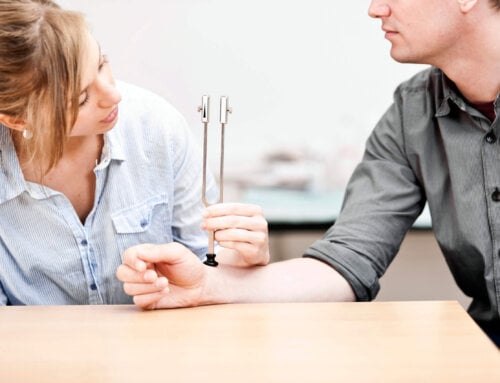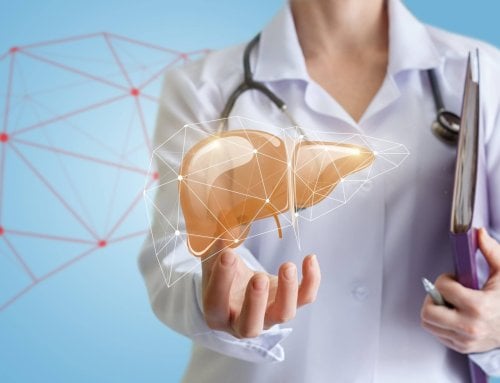What You Need to Know About ED
ED, formally known as male erectile dysfunction, occurs when a man is unable to achieve and sustain an erection to complete sexual intercourse. ED can be caused by a variety of factors and should not be confused with other problems that interfere with sexual intercourse, such as ejaculation difficulties and/or lack of desire.
ED – A Common Problem for American Men
A recent study conducted by the Johns Hopkins’ Bloomberg School of Public Health revealed that nearly one in five men experience erectile dysfunction, which amounts to over 18 million American men. The study concludes that 18.4 percent of American men over the age of 20 suffer from ED, making it a widespread condition. Men with ED should never feel alone or embarrassed.
Most ED Problems Are Temporary
The National Institutes of Health found that 5 percent of men 40 years or older experience ED, and between 15 to 25 percent of men 65 years and older experience ED on a regular basis. According the John Hopkins’ study, 70 percent of men over 70 suffer with ED. Researchers for John Hopkins diagnosed men with ED if they were “sometimes able” or “never able” to achieve and maintain an erection.
Many men fail to maintain an erection temporarily because of factors such as physical exhaustion or excessive alcohol intake. The National Institutes of Health found that failure to maintain an erection for less than 20 percent of the time is not unusual. When men fail to achieve an erection 50 percent of the time or more, it is generally an indication of a problem that should be treated.
The Anatomy of an Erection
A penis is the male sexual organ and consists of: two cylinder-like chambers referred to as the corpora cavernosa with a maze of blood vessels and sinuses, the urethra, where sperm and blood flow, erectile tissue above the urethra, the shaft (or long part) of the penis, the head or glans at the end of the shaft and the meatus, which is the opening at the end of the head where semen and urine come out. Erections begin in the brain due to physical and mental stimulation. The brain will send chemical messages to the nerves in the penis and blood will freely flow to the penis. Once the penis is filled with blood, pressure traps blood in the corpora cavernosa, and the penis expands to sustain an erection. When a man reaches the peak of excitement, an ejaculation occurs. As the inflow of blood to the penis subsides, the erection minimizes and the penis softens.
Problems with an Erection
As you can see, achieving an erection is rather complex. Many conditions can cause a problem in the process of erection achievement, including psychological, physical or a combination of both. When you have ED, there is a breakdown in the series of events that lead to an erection. The sequence of developing an erection is affected by nerve impulses in the brain, penis and spine along with responses of the muscles, veins, arteries and fibrous tissues around the corpora cavernosa. When any of these elements are not functioning problem, a man is unable to get and keep an erection to complete sexual intercourse.
Diabetes and Other Health Conditions That Affect ED
Research estimates conclude that 35 to 75 percent of men who have diabetes will experience a degree of erectile dysfunction because of complex impairments in the muscle, nerve and blood vessel function. Men with diabetes traditionally experience ED 10 to 15 years sooner than men who don’t have diabetes. Additionally, artherosclerosis accounts for 50 to 60 percent of the ED experienced by men over 60 years old. In fact, doctors have the greatest concern about heart disease when treating ED. Ira Sharlip, MD, urologist and past president of the Sexual Medicine Society of North America, stated, “Any form of cardiovascular disease is more likely to occur in men who have erectile dysfunction.”
Other health conditions that can cause an increased possibility of ED include:
- Arterial disorders such as high blood pressure, hypertension and peripheral vascular disease
- Hormonal disorders such as a low level of testosterone and pituitary gland tumor
- Neurogenic disorders such as Parkinson’s, Alzheimer’s, stroke, multiple sclerosis, brain injuries and spinal injuries
- Peyronie’s disease
- Mental disorders and psychological problems such as substance abuse, clinical depression, panic disorder, clinical depression, negative feelings and generalized anxiety disorder
- Prostate enlargement and prostate and bladder cancer, especially if there was surgery and/or radiation therapy
- Kidney disease
- Venous leak, when the veins cannot keep the blood from leaving the penis during an erection so it become impossible to maintain an erection
- Lifestyle issues including obesity, drugs, cigarette smoking and alcoho
- Aging
According to Dr. Sharlif, HIV is another factor that affects ED, and he says that, “I see a lot of HIV patients that have erectile dysfunction, which is due to neuropathy.”
Medications that Affect ED
Checking the medicine cabinet is one of the first actions to take if you suspect you have ED. Certain prescription and over-the-counter drugs can cause ED including certain diuretics and antihypertensives, prostate cancer medicines, antidepressants, anti-anxiety drugs, anti-epileptic drugs, muscle relaxants, non-steroidal anti-inflammatory drugs, antihistamines, chemotherapy medications, antiarrythmics, Parkinson’s disease medications and histamine H2-receptor antagonists. If you suspect a certain medication may be causing ED, do not stop taking it until you have consulted with your physician.
Lifestyle Has An Impact On ED
According to researcher Elizabeth Selvin, PhD, MPH, from the department of epidemiology at the Bloomberg School of Public Health, “The associations of erectile dysfunction with diabetes and cardiovascular health may serve as powerful motivators for men who need to make changes in their diet and lifestyle.” Obesity, drug abuse, alcohol abuse, lack of exercise and cigarette smoking are all controllable culprits of ED. Treatable psychological factors cause 10 to 20 percent of ED including depression, stress, guilt, anxiety, indifference and low self-esteem.
Diagnosis of ED
If you suspect you have ED, visit your physician to get a definite diagnosis. Your doctor will review your medical history and interview you about your sexual and personal history to determine if you have ED and the possible causes. Your doctor may also want to talk to your sexual partner for additional insight. Once you undergo a basic physical examination and answer a series of questions, your doctor may order certain tests including: liver and kidney function tests, duplex ultrasound, thyroid function tests, lipid profile, complete blood count (CBC), blood hormone studies, urinalysis, vasoactive injection, nocturnal penile tumescence (NPT), dynamic infusion cavernosometry, penile angiogram, magnetic resonance angiography (MRA), digital subtraction angiography, penile biothesiometry, arteriography, cavernosometry and PSA. The results of one or more of these tests will determine the cause of your ED so your physician can recommend the proper treatment.
Erectile Dysfunction Therapy
A variety of prescription and non-prescription methods of treatment are available to help men who suffer with ED. Approved ED treatment include:
- Oral treatment through three major drugs known as Viagra, Levitra and Cialis;
- Alprostadil injections;
- Vacuum pump therapy commonly called a penis pump;
- Hormone treatment;
- Counseling and/or sex therapy;
- Surgery with prosthetic implants and artificial rods inserted into the penis including an inflatable implant or a rigid implant
- In rare cases, surgery to correct a vascular problem.
There are other limited, controversial or unapproved methods of ED treatment, including:
- BEFAR, which is a cream that is only available in the Far East;
- Unapproved or controversial drug treatments such as Naltrexone, Melanotan II and Bremeladnotide;
- Gene therapy with Maxi-K;
- Herbal and alternative treatments including the controversial Enzyte, ginseng, zinc and Prelox.
The Benefits of Erectile Dysfunction Pumps
With a variety of controversial ED treatments that may be reactive or invasive, vacuum therapy system options have become an increasingly popular way to help sufferers. A vacuum therapy device is easy to use, effective and non-invasive. Up to 80 percent of men are satisfied with the results achieved through the use of erectile dysfunction vacuum therapy. The pump can be pumped by hand or run on batteries and consists of an acrylic cylinder with a pump that gets attached to the end of the penis. The air is pumped out of the cylinder to create a vacuum that draws blood to the shaft of the penis to cause an erection. A lubricant is used to slide the retaining band of the pump to the lower end of the penis so sexual intercourse can occur. The pump is removed after releasing the vacuum. The band can safely be left on for up to 30 minutes to maintain an erection.
Vacuum erection devices are effective for most ED situations, including men with diabetes, psychological issues, poor blood flow to the penis and prostrate or cancer surgery. Men with certain bleeding disorders, leukemia or sickle cell anemia are not good candidates for the vacuum pump because of the possibility of priapism, a prolonged and painful erection. Vacuum devices are affordable at $300 to $500 and often health insurance will cover part or all of the expense.
FSD – ED for Women
We often hear about ED through the media, or even in social circles, but less frequently discussed is female sexual dysfunction (FSD), the “ED for women.” For women with FSD, sex is just not what it used to be. Although we don’t hear about it as often, FSD affects 43 percent of women. Sexual problems for women include little or no interest in having sex, trouble achieving orgasm, painful intercourse, vaginal dryness and difficulty getting aroused.
Causes of FSD include aging that naturally causes dryness and stiffening of the vagina, certain medications that treat conditions such as: blood pressure, diabetes and depression. Other diseases can cause these symptoms including: diabetes, arthritis, hormone problems, pain from an injury or other physical problem, stress, sexual trauma, discontent with your body, relationship problems, anxiety or depression.
It is essential to discuss FSD with your physician to determine if a serious underlying health condition is the cause. Female sexual dysfunction treatment may include treating these other health problems, counseling, lubrication and other techniques you can use at home to minimize the symptoms of FSD. Vacuum therapy can also be effective and the Eros system offers a home-use alternative to safely treat FSD.
If you suffer from ED or FSD, you are not alone and professional treatment is the best option. Without proper treatment, you might overlook other serious underlying health conditions, and find yourself unable to enjoy sexual intercourse. Take action against ED today, and tomorrow will be much more rewarding!
Related Topics…
- Augusta Medical Systems – Erectile Dysfunction Technology
ADW Diabetes is the only diabetic supply store you will ever need! We offer diabetic supplies affordable to everyone, save up to 60% on all your supplies.
We offer the best prices and service for all your diabetic supply needs! Please contact us if you have any questions, suggestions or comments. We want you to be 100% satisfied and you can be sure that we will go that extra mile for you.












Leave A Comment